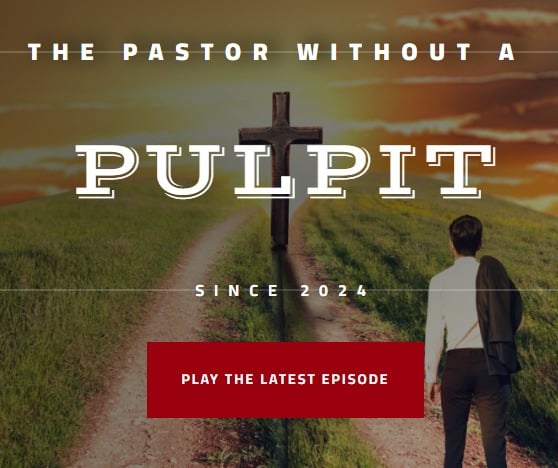 Dear Inyo Partners and Friends,
Dear Inyo Partners and Friends,
The Inyo National Forest, along with all National Forests in the Pacific Southwest Region, will be closing to most public use beginning tomorrow, August 30 until at least September 17. The decision was just made at the regional level after lengthy discussion with all Forest Supervisors over the weekend. This is not the news I wanted to share with you all ahead of Labor Day. I made it clear to regional leadership the significant impacts that a forest closure has to our Eastern Sierra communities. Unfortunately for us and many of our forest communities around the state, there are even more grave and emergent impacts from wildfires and the lack of firefighting resources. We are quickly approaching, and in some areas in the region, have crossed below the threshold of being able to effectively support initial attack operations.

Onion Fire – USFS Inyo National Forest
The fires we are seeing are exhibiting truly unprecedented behavior. I am currently in Northern California lending support to forests up here with significant fire activity. We saw two new fire starts overnight, which quickly grew in size, even outside of the area of the red flag warning. We are at the point in the region of having to prioritize which homes and communities to save because there are not enough fire resources to save them all. The decision is being made because it is the prudent thing to do for public safety. It is clear that our tactics and strategies will need to change significantly in the future in order to stay ahead of these climate change driven impacts. The risk management decisions that we are having to make are harrowing and the decision to close the forest is absolutely one of those decisions. If closing the forest reduces risk enough for us to prioritize resources to save a community or save a life, I have to say that it is worth it.
I am asking the district rangers and the rest of the Forest Leadership Team to reach out to you all as well as other key partners and permittees to talk about needs and impacts to your operations. We will do what we can to make sure you have access to the forest to take care of property and infrastructure. We are working on other exemptions as well, including ongoing mission critical work, tribal access needs and business owners who provide vital services to our communities and other travelers on main highways, including stores and gas stations. If you have questions about possible exemptions or your particular situation, please contact your permit administrator or district ranger directly. (Note that Philip DeSenze is out of the office. David Andersen is acting for him.) A press release with this news will be coming out shortly, so please feel free to share this information with your constituencies.
Thank you for your continued partnership and understanding with this very difficult situation. I will continue to communicate directly with you all via email as I have updates and information to share. My ability to respond to specific questions will be limited while I’m on fire assignment, so I ask you all to contact your district rangers with questions that need a more immediate response.
Stay well and take care,
Lesley Yen
Forest Supervisor
Inyo National Forest
Discover more from Sierra Wave: Eastern Sierra News - The Community's News
Subscribe to get the latest posts sent to your email.


















Inyo Forest Supervisor Lesley Len said “It is clear that our tactics and strategies will need to change significantly in the future in order to stay ahead of these climate change driven impacts.”
Lesley’s press release interestingly does not even mention excessive fuel load as the culprit.
High intensity “mega” fires are the result of high fuel loads and would occur regardless of climate change. Climate change does cause warmer temperatures because more of the year is warmer, so it extends the fire season but it is the excessive fuel load that causes the Mega fires not climate change. Incorrectly identifying climate change as the cause of high-intensity fires guarantees the solutions will continue to fail as the record clearly demonstrates.
It is negligent land management by her and the agency that is responsible for the excessive fuel load and resulting mega fires. I would appreciate it if Len could produce the data/science that would support her climate change narrative and their policies of almost total fire suppression? Failure to produce such documentation and dialog would indicate you lack reason and are a member of the Church of Climatology.
Smokey the Bear agrees with Sierra Wave Reader 100%. Well put. Of course everybody will bash these comments thinking that the front line people are being bad mouthed or doing anything at all that makes sense is not safe. Back in the old days there were more rangers to keep an eye on things, but to save money, a lot have been laid off. There’s the real problem. Not enough personnel and resources. USFS is not a for profit business, it’s a public service that should be funded according the needs of the tax payers. Rising health care costs, pensions, and the Fed wanting our tax money for ‘other’ things is the root cause of not enough staff. Same problem with the health care industry and utility companies on the private side. Employees are the most expensive thing to have these days, so everything is going on line. Meanwhile, the population in this state continues to grow and grow. End result, not enough rangers, firefighters, tree trimmers, ICU staff, doctors etc. for the inevitable emergencies. The other thing ‘ol Smokey would like to point out is ‘follow the money’ concerning Yosemite and Sequoia Parks. At 20-30 bucks a carload that goes directly into the national general fund, why would the Fed want to close down that cash cow? Fighting fires is money out. Money in vs. money out. Duh.
So for this holiday weekend, I think I will join ‘ol Smokey down in Las Vegas because there’s nothing else to do here except work around the house.
I believe the reason to close the forest is two fold.
1) to help prevent some reclass, careless, drunken camper from starting a fire.
2) What if you have a thousand people recreating in the forest and a fire does start. Either lighting or idiot caused. How do you get all those people out? And fire fighting equipment in with all those people clogging the roads?
I’d hate to be the person the who decides these things. No matter which way you go, you are going to piss off someone.
Were the Inyo County Supervisors, community leaders and local business leaders included in the discussions to abruptly close the forest? If not, why not? Whether you are ok with closing the forest or not, shouldn’t the communities that support the INF be included in this discussion? We are all concerned with the California fire situation but maybe some compromise could have been reached….like allowing day use of the forest, for example. I hope it is not like last year, where the closures were repeatedly extended.
Now that America claims to be kicking the forever wars habit, perhaps America will have the money to fully fund sustainable management of our public lands, consistent with the reality of the changing climate. Maybe we’ll even have the money for habitat and watershed restoration to help improve public land ecosystems.
Charles, imagine if everyone were as civil as you!
I think everyone can agree on the basics: megafire, property loss, death, and the all the forms of stress related to modern megafires are bad. Most people are good and would agree on that. It’s what’s reasonable (or effective?) to do about it that’s up for debate.
Well since I live in the inyo national Forrest they can’t stop me from shooting golf balls at my weedwacker, who weedwacks for recreation anyway. And copper/plastic dont cause sparks…
People like you are going to make sure that “as long as it’s there” won’t be much longer.
Serious question to those criticizing these temporary restrictions:
-Knowing that roughly 85% of vegetation/wildland fires are human caused.
-Knowing that hundreds of lives have been lost in recent years due to these fires.
-Knowing that billions of $$ in property losses have occurred in recent years due to these fires.
-Knowing that the drought has fuel moistures extremely low.
-Knowing that current and predicted weather conditions present an extremely high risk for fires.
-Knowing that fire suppression resources are almost completely depleted due the various fires currently burning.
How would you suggest the USFS and other agencies handle this situation?
Charles: I guess it wouldn’t bother me as much if two fire prone areas, 1 ,a national forest, partially in Ca, Toiyabe, and 1 a national park, Yosemite, were also shut down. Especially Yosemite, where major fires have occurred thru out both of our lifetimes. Kind of shoots your 6 reasons to hell. And some of you say it is not political
BobK,
I agree there is some glaring inconsistency with these restrictions. However our National Parks are managed by an entirely different department within our federal government. And the Toiyabe NF is under the direction of a another region within the Forest Service. So those making the judgments on this closure have no authority over the National Parks or the Toiyabe. Different managers coming to different conclusions. Not uncommon within our government.
Inconsistent? Yes absolutely. However that in itself doesn’t make this a bad decision.
Let’s start by not punishing the responsible and the innocent. I know, tough concept for a bureaucrat to wrap his head around. But not tough for an American.
FWIW, I don’t work for a public agency.
That aside, are you implying that public employees are somehow less “American” than you are?
In all due respect Charles, some of your metrics are misleading. You’re a well-respected individual here (and I respect you), which compels me to respond with data that is more reflective of reality than the numbers you cite.
Saying 85% of fires are human caused, and using that to support rational for blanket closure, implies people in the forest are responsible for the majority of fire. Let’s look at CA’s top 10 biggest fires since they’re representative of the sort of events that have lead to these blanket closures. August, Dixie, Mendocino, SCU, Creek, LNU, North Complex, Santiago, Thomas, and Cedar. Of those, which were caused by people being present in the forest? The Creek Fire was likely someone partying/camping last Labor Day weekend, and the Cedar was a lost hunter making a fire to signal for a rescue. Santiago was in 1889, so it’s cause is perhaps irrelevant (though it was human caused). The rest of CA’s huge fires that suck up all the fire fighting resources were started by lightning and (likely) faulty PG&E equipment. There may be truth in the 85% of fires being human caused metric, but cause of modern megafires doesn’t support the conclusion that blanket closures will have a significant impact on more unstobbable fire.
Of those 10 fires, how many people died? According to Wikipedia, 60 people. More than half of those people were in two fires in populated areas. Most of the modern megafires haven’t killed many people. The Camp Fire was the deadliest fire in CA history. 85 people died. Would blanket forest closures have prevented that? No. It was caused by faulty PG&E equipment. The next deadliest fire was 1933 brush fire by LA where people fighting the fire died. That was 1933…The next deadliest was in 91 by Oakland. That was caused by an ‘incompletely extinguished grass fire’. I’m not seeing a basis for your statement of hundreds of people dying, and I’m definitely not seeing people out recreating in the forest as a cause of others’ dying due to fire.
The rest of your statements are quite true. However, there are more things to consider.
Should areas that have burned in the last 20 years be closed? What about 10 years? You can get on Caltopo.com, turn on the fire history layer, and see that the portion of national forest that is no longer susceptible to uncontrollable fires due to old forest having burned is very significant. I’d estimate 33%. Burnable brush can grow back in within 10 years, but the massive fuel loads driving today’s megafires require decades of growth. A fire in burned terrain will be controlled with far, far less fire fighting resources because it won’t burn so darned hot that it spots fires long distances and keeps fire fighting efforts pushed away. So why not consider keeping areas that have burned open?
Another consideration is what about the Owens Valley? Sage and brush fire sure can run hard here in the valley (only if there’s wind), but, again, there just isn’t the fuel load here in the desert. That’s why you don’t see megafires in the driest of places like here or…Nevada. A look at fire history shows that all fires in the Owens Valley are comparatively small. Owens Valley fires really don’t relate to the more destructive, deadly fires of concern. I can see shutting down forest in the Lakes Basin by Mammoth, but why in the Owens Valley? Your points about billions in damage, hundreds of deaths, and 85% of fires being ‘human-caused’ (people recreating???) aren’t valid or relevant to national forest on each side of the Owens Valley (as well as many others places in the Sierra).
I sure do understand the logic of fire fighting resources being stretched thin, but ‘thanks’ to prior fire and places like the Owens that don’t have the potential, there is plenty of area that don’t require much in the way of fire fighting resources should a fire start (from a hiker? a backpacker? someone fishing? someone camping without a fire?).
One more thing to consider is the future. With climate change seemingly driving less precip and more heating to dry out soils, is it going to become the norm that USFS closes everything down in prime recreation season? Is that a truly a reasonable thing to do if it’s not people recreating but things like lightning and PG&E equipment starting these fires?
So what should the forest service do? Your question is an intelligent one. I suggest selectively opening areas that do not have potential for megafire that requires tons of fire fighting resources. I suggest opening campgrounds and enforcing a no fire policy. The USFS spends on average $1.5B -$1.75B / year (depending on what recent time period you average over) on fighting fires. They’ve 20,000+ personnel to throw at fires across the US. I think they could afford one guy at each campground to act the role of enforcing a no campfire policy – particularly when it’s kind of expensive to camp somewhere ($20+/night). Furthermore, as a tax payer who is having access to ‘public’ lands blocked, I would question the forest service to produce data that backs a conclusion that keeping people out makes a significant impact. The forest service admin saying, ‘it’s for the safety of people’ isn’t backed by data showing folks recreating in the forest are killing ‘hundreds’ and causing ‘billions’ of damage. Rather, it’s a quick and easy justification that makes sense to people (most which likely don’t spend more than a few days top in national forest land per year) and appeals to human emotion.
People will probably read this and infer that I don’t respect the fire fighters efforts, individuals’ property, and the stress folks are feeling. That inference is not true. I respect them and appreciate the pressure they must feel amonst the neighborhoods around SLT right now. How much sleep are they getting? How much sleep are all the folks who were evacuated getting!? I can think that, but also believe the forest service could be more strategic and thoughtful.
SWR,
Although I don’t completely agree with all of your conclusions, I thank you for your thoughtful, (and thought provoking) response.
Allot the $$ and resources to forest management and fire prevention from the “Governor” on down. Make forest management and upkeep a priority — over funding immigration – mostly illegal.
Totally agree with the notion of funding to a level that will allow for better and more thorough management of our National Forests. And though our former pres liked to pass the buck to our “Governor” regarding the forests… it’s the federal government, not the state, that is ultimately responsible for our National Forests.
I hope the LA Times gets this information for the people that want to travel to the Eastern Sierra’s
Respectfully disagree as a “local.”
There have been fires created by recreational use—hot tail pipes, weed wackers, chipping golf balls, bullets hitting the ground for target shooting, etc. etc.—and, at least for some, these have happened by people who live in the area that caught fire.
The bigger issue is supporting those who are on the front lines of the fires, and understanding that, with fire fighters/personnel leaving Mono and Inyo county to help means they are not in Mono or Inyo should we have a fire.
The people who are in the middle of this are overwhelmed, freaked out and desperate.
I think we need to follow their lead and, when seeing their relief related to the closures, understand the need.
All that said, when I’m just thinking about myself (and my dogs) I’m super, very disappointed that this is happening.
But, if covid taught me anything, it’s that those who care about the greater good won’t decide that an individual need/desire is more important.
Cheers.
Same old sad song. ‘Let’s close down and keep people out!’ ‘But let’s not invest in any personnel to enforce this, way too much $$$ for ol’ Smokey, much more cost effective just to close the snow gates!’ Never mind that people with prepaid reservations will come up here anyway, and that they will try to sneak into the forest anyhow. So who’s going to patrol for all the illegal sneaky campers who are going to be hiding behind every bush and tree off every dirt road they can find? Smokey, oh where oh where have you gone?
I expect the USFS hopes that the latest computer program will fix this. A friendly robo text call reminder about forest fires from Pakistan should do it. Right? Well, it is more cost effective than ol’ Smokey. Back in the olden days before computers the USFS used to have Smokey around to just bug people about fires and such. But, times change, so no more computer illiterate Smokey around for that job or to write parking tickets for the inevitable auto log jams in front of the snow gates. In their defense, USFS did try to get Smokey up to date, but again, too much $$$ in a tight budget for a custom I-phone for his over-sized paws. So poor Smokey got forced into early retirement. BTW, I heard that Smokey took his pension, and moved to Las Vegas, (too expensive to retire here in California). Now that’s one smart bear.
Well, *heavy sigh*, looks like we’ll just have to believe in the goodness of people, and that everyone will be honorable about their behavior this autumn when they come to visit this area. And maybe, just maybe, they’ll even take their trash out with them this time when they leave instead of trying to burn it!!
I hear no mention of the economic hardship that local businesses will suffer or the local towns that will feel economic hardship as well loss of recreation opportunities for everyone. Did you discuss the closure of INF with the Inyo county board of supervisors and local business owners and the communities adjacent the INF?
Spot on sugarmags.
How about it Forest Service?
Show us you can adapt and manage the forest and people for whom you’ve been created to manage.
We pay your salaries.
Just ignore and do as you please. They don’t get to control our lives.
Everyone should just ignore this and go about their day and do as they please in the lakes basin. That’s what you’re supposed to be able to do in a free society. That, or we follow clueless politicians and bureaucrats who tell us that we can’t even go boating on a large body of water for fear of a forest fire, which makes zero sense. Again it’s a one-size fits all approach by government that punishes too many and does too little to address the actual problem. As if local businesses haven’t been kicked enough over the last year and a half, now the U.S. forest service is yanking the rug out from under them during the lucrative Labor Day weekend. Civil disobedience is needed. No more letting government fiat dictate our lives. Go boat, go hike, go have fun. The politicians can go somewhere else that’s very hot too…
Dickson Thease I agree civil disobedience is needed… but not for this.
I know I know, the slippery slope of authoritarianism and all that but not over this issue.
I don’t agree with closing the forest down early again. This will hurt local businesses that are trying to survive over a year and a half of turmoil. Not to mention locals won’t be able to recreate and get out of the heat in the valley. Why not allow day use? We were already under fire restrictions. Day use should be allowed in the Inyo. Sequoia National Park is open just to the west so what’s the point of punishing Owens Valley businesses by closing our forest? At least allow day use…
….AMEN….Last year they closed it at the same general time, worried about the fires in southern Inyo/Kern. Opened it closing weekend of Deer season. Any bets that will be when they consider opening this year? Toiyabe [sp] remained open the whole time.
It’s an inconvenience for sure. I was just wondering where I will be able to walk my dogs; and, myself. And, I do not have the sources you are asking for, however, figure, with a quick Google search, you can find the fires that started by parked cars and their hot exhaust pipes or target shooting or, even, golf shots. Perhaps the point is less that we recreators, even the responsible ones, put a burden on those who have to monitor the irresponsiblables or those who are ignorant and might cause a fire. “Short staffed,” means that we do not have the personnel here to fight a fire should it start to get beyond what our local fire crews can handle. And, I’m guessing, those who are tasked with making sure we don’t burn down here are very, very worried and just don’t need more to think about. So…locals….again and with gusto….support your local restaurants and be the frick nice/kind/gracious to all who are serving you your food/groceries/mail/etc. etc.
The more government restrictions, the more defiance. The more defiance, the more disrespect of government. The more disrespect of government, the more our political system that has lasted 250 years is at risk. This is precisely the pattern that doomed the USSR. I saw this first hand serving in the Navy.
If you are in government and you wish to preserve the current system, you need to start thinking outside the box of restrict, mandate, forbid. If you don’t, you need to start working on your flexibility and adaptability to whatever system comes next.
It is extremely difficult for N.I.H. right now to find a hospital with an available bed for transfer.
They tell us the hospitals have too many covid patients–a virus that could be mitigated still if we be smarter.
The Inyo National Forest is closed.
South Lake Tahoe very existence is threatened.
We’ve been breathing unhealthy air for almost 3 months.
Can’t get proper medical care can’t recreate if you’re healthy.
Just a bit of history tells us that this is what a nation looks like when declining.
I could go on …
I love our country and would defend democracy with my life.
My point is these problems affect us ALL-right and left.
We all created this we all can fix it.
Simply blaming the other side will never help.
Blaming Trump or Biden or Newsome or whoever our favorite enemy is counter-productive.
I’ll get off the soapbox now thanks Sierra Wave for letting me vent.
Will Lake Crowley and it’s basin be included in the closures?
Lake Crowley??? Where in the world in Lake Crowley? LOL you must mean Crowley Lake, and you must not be local… SMH
Is there a way to find out what will be open in the Eastern Sierra, as we all know people will still come up to Bike Fish Hike etc..? The fear are those that may be forced to disperse camp. Curious if any of the chambers visitors centers have this information available?
This website has information on the different land jurisdictions and dispersed camping info: https://www.essrp.org/camping
Katie, all the less healthy stuff will remain open such as liquor stores, bars and dispensaries.
Healthy outdoor activities on INFS land will not be permitted.
Where’s the evidence that closing to *all day use* is in any way reducing fire risk in Inyo NF?
If someone can point me towards any fires caused by standard day use – I’d love to know.
Because otherwise this really looks on its face like a pure political move that isn’t truly reducing risk to our communities while lowering the quality of life significantly. Especially for dog owners in Mammoth.
They need to exempt locals. We all know why they’re doing this, because fire resources are spread too thin and this discourages tourists from coming up here and stops high risk activities like camping, both in campgrounds and dispersed.
While locals want to see the forests protected, we are left in the lurch. We have no yards, no where to even walk our dogs. Not to mention this the time of year we’ve all been waiting for. A time to hike and bike without thousands of tourists.
How about recognizing that not all activities create the same risk. Letting locals bike and hike is important for our physical and mental health while causing little risk.
USFS has pretty much crapped on locals the last 2 years. We live here to enjoy the natural beauty of the area, but we don’t get much chance to anymore. Everytime the tourists begin to recede, USFS closes the forest.
Far as I’m concerned “stretched fire resources” isn’t a justifiable reason while Yosemite and SEKI remain open to an order of magnitude more visitation in a significantly more fire prone forest setting.
But closing those would obviously be too limiting to the more populous western slope population, let alone the economic interest of the park concessions and larger foothill communities in the WUI.
Easier to make a token example of the significantly more fire resilient forest of the Eastside, filled with mostly granite and the beneficiary of a reasonable 2021 monsoon, where it won’t step on so many toes, evidently.
Remember, we couldn’t even get a developed campground fire ban instituted not long ago, let alone a vehicular dispersed camping ban.
But now it’s critical the we, but certainly not the National Parks, close everything including safe day use, immediately.
I remember the fear of fire creeping close to my home. Having the pet carriers out and the bags packed in the car in case the evacuation order came through. I remember watching the fire on the hills to the southwest get closer, and the fear that it wouldn’t be controlled in time. Wondering if we were a day or two away from homelessness.
This isn’t distant history, this is just in the past couple years. The potential damage of a fire sweeping down the hillside is far higher than the minor hardship of a few weeks of park closure.
Guess what the National Park System does that the Forest Service doesn’t? They charge a gate fee, and hand you a paper with regulations. Of course, whether or not anyone reads said regulations is up for debate. NPS needs those gate fees (some of the only revenue they receive), while the Forest Service is fed tax money that is mostly dedicated for fire fighting. Maybe if we paid more federal taxes, our federal agencies would be able to hire more enforcement/education? Ha!
Also, if the forests with ‘Extreme Fire Danger’ were closed, and Inyo remained open, where do you think all the tourists will go? Be careful what you wish for.
I’m with you on an exemption for locals. Too many tourists up here for my liking.
Lower Rock Creek fire was attributed by investigation to spark from a mountain bike pedal hitting a rock on the trail. Sherwin Lakes fire attributed to day hikers burning trash. FS had to extinguish hundreds of illegal camp fires at dispersed car camping sites around Mammoth last summer.
Numerous fires have been started via motorized vehicles doing standard day use things. People still make camp fires or use gas stoves despite restrictions. People smoke. People shoot guns.
Dude you should keep your head down, shelter in place at home, order groceries in. Life is full of lions and tigers and bears. And rabbits. You’re a rabbit